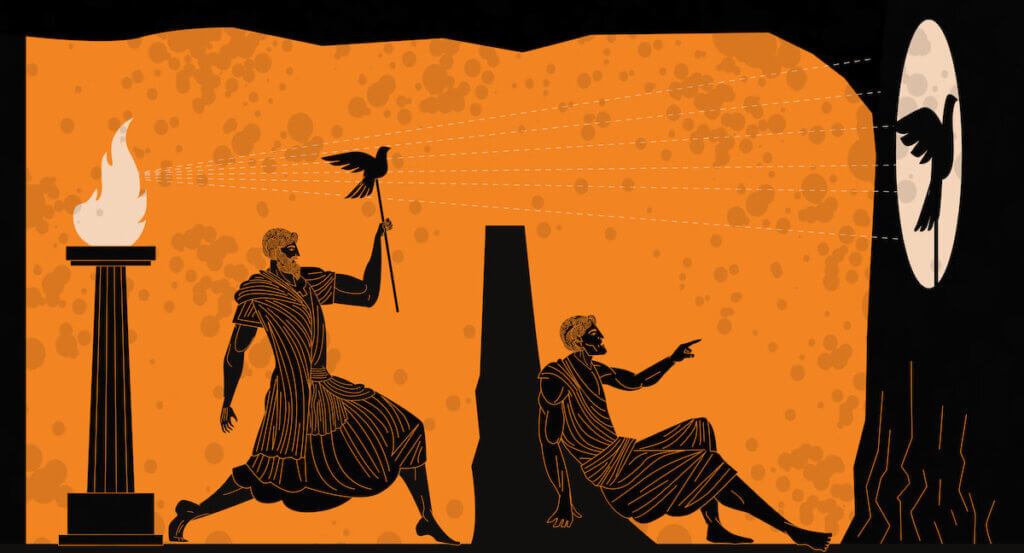Why Authenticity Is The New Status Symbol In Luxury
Why Authenticity Matters in Today’s World
The entire discussion surrounding authenticity began in Miletus in the 6th century BCE, when Anaximander questioned the idea that only the gods could explain the incomprehensible phenomena of the world. However, it was Plato who made the great logical leap, telling the story of men chained at the bottom of a dark cave. Seeing only shadows projected by a fire onto the wall behind them, they believed those shadows to be reality. When one of them broke free and emerged into the sunlight, discovering the world beyond, he returned to share his revelation—only to be met with disbelief by his companions.
Since that moment, philosophers, poets, and intellectuals have continued to debate, challenge, and reinterpret the relationship between truth and illusion.

The most recent voice in the debate comes from science: quantum physics tells us that reality is not as it appears. Beneath appearances lies something that transcends what the eyes can see and the senses can perceive. At the same time, technology allows us to alter photos and videos at will. We manipulate even our own bodies, distorting our true appearances—often for nothing more than a few extra likes on social media.
Unsurprisingly, we now face an onslaught of false information, making it harder than ever to distinguish truth from lies—even in the words we use. Words have become like water: colourless, tasteless, odourless, transparent. When everyone speaks at once, the meaning itself disappears, and facts dissolve in a babel of commentary. The truth becomes elusive, submerged in a torrent of images and words that blur the line between belief and knowledge.
This reversal of meanings has become a defining feature of our time, reducing us to mere spectators of reality.
We—worshippers of forms, sounds, and words more than their content—remain at the bottom of that cave.
In today’s media-driven, hyper-real, and hyper-imaginary society, we exist beyond the boundaries of truth and falsehood, immersed in the enigmatic reversibility of appearances.
Craft as An Original Embodiment of Authenticity
The word authenticity derives from the Greek authós (self) and entós (within), referring to a true interiority that goes beyond appearances or commonly held beliefs. From the Greek authentikós, it originally meant “made by one’s own hand,” linking authenticity to creative authorship (authéntes, meaning author). In ancient Latin, the adjective authenticus meant genuine—something demonstrably true, not false or forged, and resistant to imitation or dispute. A work of art is considered absolutely authentic when it is conceived, realised, and completed by a single author.
Over time, this classical notion evolved. Psychologists now describe authenticity as remaining deeply connected to one’s own values, experiences, personal history, and desires. In this sense, the distinction between authentic and inauthentic mirrors the difference between depth and superficiality.
In the modern world, we also apply the term to brands. A brand is considered authentic not just when it inspires trust, but when it actively demonstrates care, responsibility, and helps us see ourselves reflected in it. Authenticity, then, is the ability to integrate and represent all aspects of who we are—our values, qualities, vulnerabilities, and lived experiences—across all contexts.
Accordingly, authenticity may refer to anything original or traceable to an artist, a cultural moment, or a specific technique. In this sense, it can be interpreted as an aura: a quality that applies not only to an object’s physical presence, but also to its emotional and experiential impact on those who encounter it. This is what we call experiential authenticity.
At its core, authenticity is an idea of freedom—suggesting that each person must design and live their own life.
But what truly guarantees authenticity? A logo? A certificate? Blockchain?
At MANIMA, we don’t believe these are enough. Authenticity is not something to be verified after the fact. It must be embedded in the process—from the materials used, to their origins, the hands that shape them, and the place of their creation.
A Brand's True Identity Lies in Its Commitment to Values
A brand, in its everyday relationship with its surroundings, must serve as both an amplifier and communicator of the social values it represents. To do this, it must engage meaningfully with its own history, values, content, mission, and its vision of its place in the world. In a word: identity.
Without a deep awareness of its identity and objectives, a brand cannot effectively position itself in a social—and even quasi-political—role within a public sphere where audiences increasingly act as active participants in cultural production.
As Godard once said of cinema, we might now say of branding: it is no longer brands or great designers that dictate the fashion of the world. It is the world that fashions itself.
By Piero Di Pasquale and April Clark

